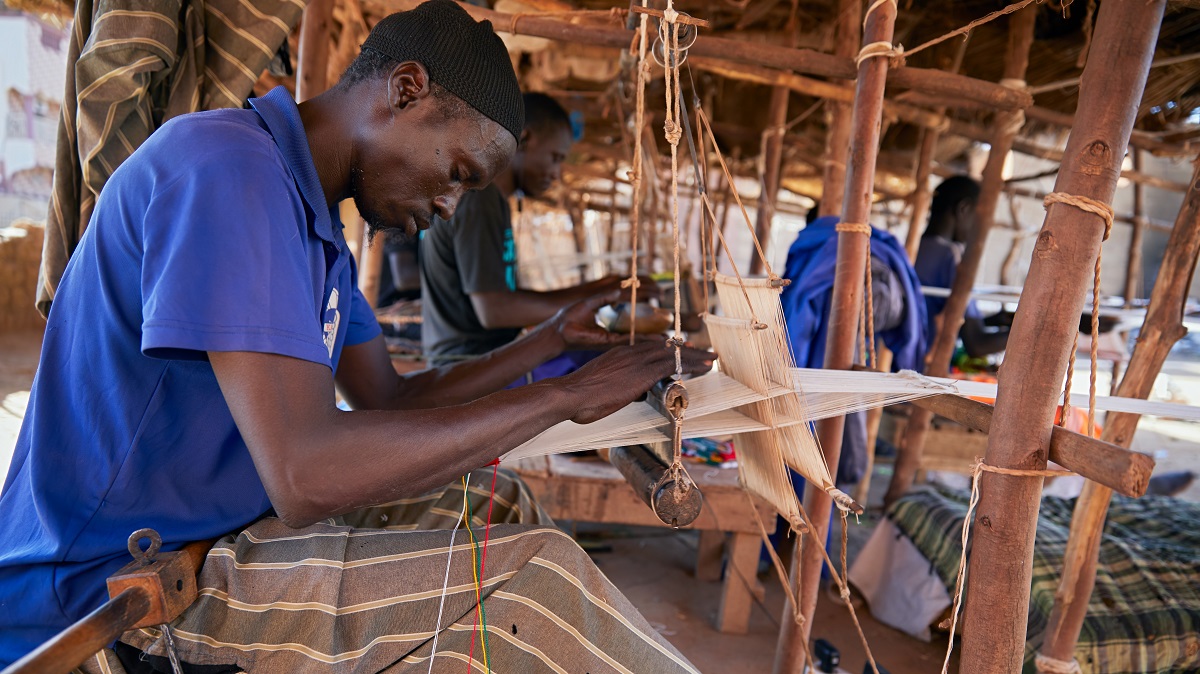Cotton is a fibre like no other, helping alleviate poverty in some least developed countries and providing employment to millions of people across the globe.

© DemarK/Shutterstock | A worker weaves cotton at an outdoor textile factory in Mopti, Mali.
World Cotton Day marked on 7 October is an opportunity to celebrate and show the positive impact of this important commodity.
Cotton is a source of income for over 100 million families worldwide, many of them small farmers in rural communities in developing countries. A single tonne of cotton provides year-round employment for 5 people on average, often in some of the most impoverished regions, according to United Nations estimates.
“But the importance of cotton for many developing countries extends beyond its producers and those directly or indirectly engaged in the value chain,” UNCTAD Secretary-General Rebeca Grynspan said in a statement.
For example, cotton is the leading export commodity in Benin, with 61% of total exports. And it’s the second-largest export product for both Mali and Burkina Faso, after gold.
Cotton is therefore a key source of foreign currency in these three least developed countries, as in many other developing countries.
Four challenges need to be tackled
Ms. Grynspan said it’s important for developing countries to reap the full benefits offered by cotton, by addressing both old and new challenges present in the cotton value chain.
First, productivity must be increased to produce cotton at a scale that can feed the cotton industry. This requires access to credit markets, rule of law and formal working and trading conditions.
Second, adequate, timely and affordable access to inputs like fertilizers remains challenging in several cotton-producing developing countries, especially following the war in Ukraine, which has produced a massive fertilizer crunch.
For example, the prices of two key inputs in fertilizer production, phosphate rock and urea, increased by 130% and 75.5% respectively between June 2021 and June 2022.
In cotton-producing countries like Mali and Burkina Faso, the authorities responded by subsidizing fertilizer sales to farmers during the planting season of 2022.
However, this response has its limits given the financial stress facing many developing countries, which are already struggling to pay their debts.
Third, the cotton sector faces the rising challenge of climate change, especially the elevated risk of extreme weather events, in countries where farmers have very limited access to risk-mitigating measures such as insurance.
Ms. Grynspan said this needs to be acknowledged as an issue affecting primarily poorer cotton producing countries to come up with tailored response measures.
Fourth, efforts need to be devoted to fostering higher and more stable prices for cotton farmers, increasing access to post-harvest services such as transport, and investing in the production of cotton by-products. This could boost the benefits of this commodity by creating a wider industry cluster around it.
Plenty of room for improvement
“There is plenty of room for improvement. Our research shows that only one in four cotton farmers in Togo sold by-products, mostly cotton seeds,” Ms. Grynspan said.
This year, UNCTAD concluded a project in Togo that surveyed 423 cotton farmers in Kara province. Most of them came from households of 10 people or more, 95% had less than three hectares of land and only 6% were women.
Over the years, the organization has assisted these small cotton farmers, especially in Africa, where it has carried out important research projects.
Ms. Grynspan underlined UNCTAD’s commitment to continuing its support for cotton farmers and value chains in developing countries in the years ahead.



